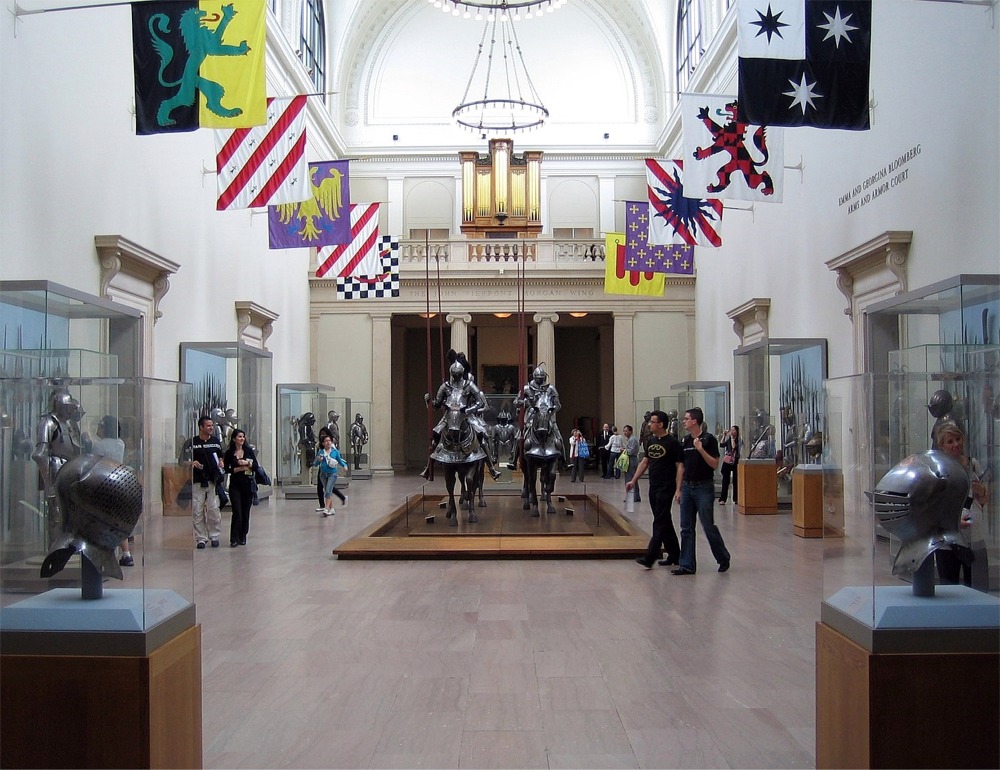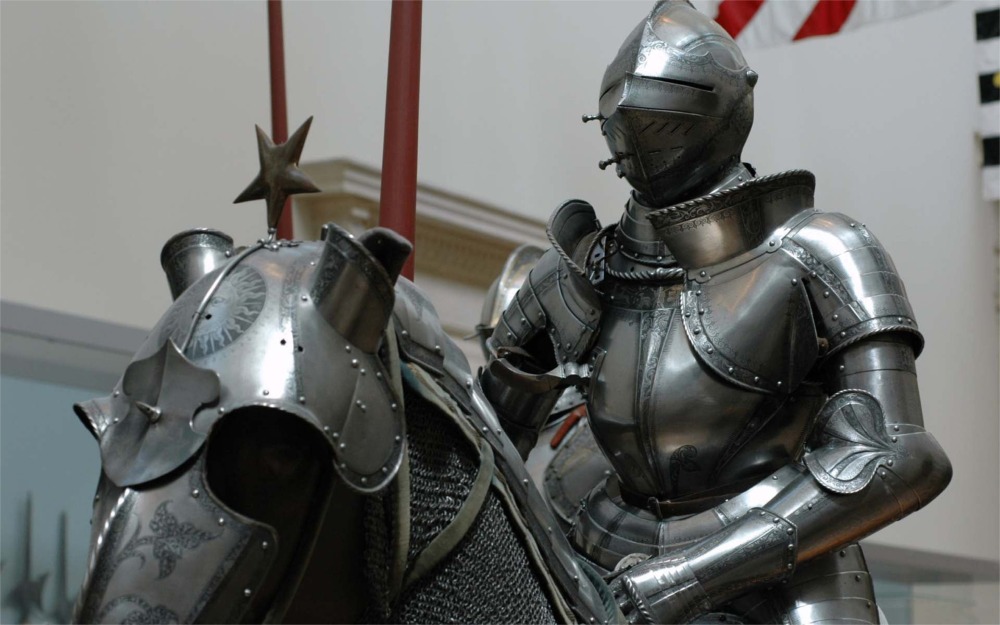Arms and Armor Department
Home > New York State Photographs > Metropolitan Museum of Art > Arms and Armor Department


The first photograph shows four mounted Knights at the Arms and Armor Department at the Metropolitan Museum of Art in New York. It also shows a collection of various pieces of arms and armor.
The first photograph only is licensed under the Creative Commons Attribution-Share Alike 3.0 Unported license. Author: Arad. It has been modified to have a horizontal pixel count of 1000.
The photographer of the second photo is unknown.
Arms and Armor
The Met's Department of Arms and Armor is one of the museum's most popular collections. The distinctive "parade" of armored figures on horseback installed in the first-floor Arms and Armor gallery is one of the most recognizable images of the museum, which was organized in 1975 with the help of the Russian immigrant and arms and armors scholar, Leonid Tarassuk (1925–90). The department's focus on "outstanding craftsmanship and decoration," including pieces intended solely for display, means that the collection is strongest in late medieval European pieces and Japanese pieces from the 5th through 19th centuries. However, these are not the only cultures represented in Arms and Armor; the collection spans more geographic regions than almost any other department, including weapons and armor from dynastic Egypt, ancient Greece, the Roman Empire, the ancient Near East, Africa, Oceania, and the Americas, as well as American firearms (especially Colt firearms) from the 19th and 20th centuries. Among the collection's 14,000 objects are the oldest items in the museum: flint bifaces which date to 700,000–200,000 BCE. There are also many pieces made for and used by kings and princes, including armor belonging to Henry VIII of England, Henry II of France, and Ferdinand I, Holy Roman Emperor.
Medieval art and the Cloisters
The Met's collection of medieval art consists of a comprehensive range of Western art from the 4th through the early 16th centuries, as well as Byzantine and pre-medieval European antiquities not included in the Ancient Greek and Roman collection. Like the Islamic collection, the Medieval collection contains a broad range of two- and three-dimensional art, with religious objects heavily represented. In total, the Medieval Art department's permanent collection numbers over 10,000 separate objects, divided between the main museum building on Fifth Avenue and The Cloisters.
The Metropolitan Museum of Art of New York
The Metropolitan Museum of Art in New York City, colloquially "the Met", is the largest art museum in the Americas. Its permanent collection contains over two million works, divided among 17 curatorial departments. The main building at 1000 Fifth Avenue, along the Museum Mile on the eastern edge of Central Park on Manhattan's Upper East Side, is by area one of the world's largest art museums. A much smaller second location, The Cloisters at Fort Tryon Park in Upper Manhattan, contains an extensive collection of art, architecture, and artifacts from medieval Europe.
The Metropolitan Museum of Art was founded in 1870 with its mission to bring art and art education to the American people. The museum's permanent collection consists of works of art from classical antiquity and ancient Egypt, paintings, and sculptures from nearly all the European masters, and an extensive collection of American and modern art. The Met maintains extensive holdings of African, Asian, Oceanian, Byzantine, and Islamic art. The museum is home to encyclopedic collections of musical instruments, costumes, and accessories, as well as antique weapons and armor from around the world. Several notable interiors, ranging from 1st-century Rome through modern American design, are installed in its galleries.
The Fifth Avenue building opened on March 30, 1880. In 2021, despite the COVID-19 pandemic in New York City, the museum attracted 1,958,000 visitors, ranking fourth on the list of most-visited art museums in the world.
From Wikipedia, the free encyclopedia.


